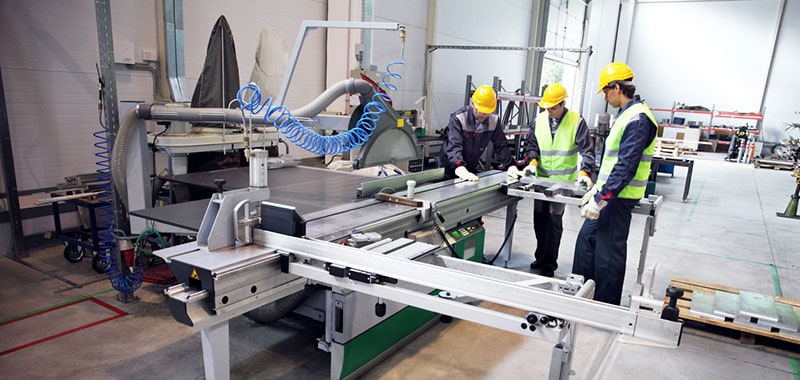How to Prepare the American Workforce for the Manufacturing Surge


At the end of February, President Trump sat down with the CEO’s of several Fortune 500 companies. After this meeting, Trump stated that these leaders have committed to helping the President bring back manufacturing jobs to the United States. This promise to bring manufacturing jobs back to America is nothing new for Trump; in fact some might argue that Trump won the election on this campaign promise.
However, whether or not the President does his best to follow through on this promise of “25 million new positions” there are other factors that may dictate if his goal is achievable. Recently, Bloomberg’s Andre Tartar tried to articulate this message within his article Factory Skills Gap Could Spell Trouble for Trump’s Jobs Plan. While the President’s intention may well be to help establish a strong manufacturing industry, there may not be the talent available to bring back this industry.
In order to understand the difficulties in revitalizing the manufacturing industry one must understand, and acknowledge the “skills gap” currently within America. Bloomberg partnered with Randstad Sourceright to conduct a research project surveying over 400 global HR executives to analyze their struggles of creating and filling positions, and how they believe this information may project forward.
While 41% of these executives believe that they will be hiring new staff members this calendar year, these executives foresee it being difficult to continue at this hiring rate because of the lack of prospective employees with the skills necessary to perform the tasks needed to work within their respective companies. Within the survey, HR executives ranked “talent scarcity” as having a greater concern within future business than “robotics, freelancers, automation, and foreign talent.” About 80% of these employers stated that they foresee a shortage of sufficiently skilled workers will affect their company’s success in the next 12 months. These statistics bring us back to the difficulty of creating millions of infrastructure jobs within the next four years.
While creating jobs can be rather difficult, the data seems to indicate that filling jobs may be a more difficult task than creating jobs.
The Bureau of Labor Statistics released information that mirrored this sentiment when they showed that there were 324,000 manufacturing job openings this past November, which is almost an 100,000 opening increase from the previous November.
This data is rather troubling because it seems to indicate that the gap between the number of individuals who have the skilled required of these jobs and the demand for those skills is increasing, so one must wonder what can we do to help bridge the skills gap to create a more sustainable workforce. This is precisely what we at SkillSmart are working to address, our goal is to build a pipeline of skilled workers.
The greater Washington DC region, like many other regions throughout the country, has many positions that remain unfilled. A case study for this issue was our partnership with MGM National Harbor. Being one of the first casino resorts in the capital region, MGM recognized the challenge of building a strong workforce to fill the 4000 positions they were seeking to hire. Adding to this challenge was the condition that MGM was to hire a certain quota of individuals from within the county.
SkillSmart partnered with MGM to build a local workforce pipeline by deploying its skills-matching platform to more clearly articulate the skills MGM was seeking to hire and to then effectively connect job seekers with local education resources linked to providing those specific skills through partnership with local education providers, like community colleges. This built a more skilled applicant pool resulting in more successful hiring outcomes and higher rates of retention while providing a clear path for local job seekers to acquire the skills needed to become successful employees of MGM.
SkillSmart is proud to be part of the effort to help solve the skills gap within the Washington DC region as well as the other communities in which we work. This same approach can address the skills gap to grow the workforce and help fill the 25 million infrastructure and manufacturing jobs. Creating the jobs alone is not sufficient. An equal focus needs to be placed on providing local job seekers in communities across the nation with a transparent mechanism to acquire the skills that the manufacturers are looking to hire. Only through this approach will businesses and local economies grow.

